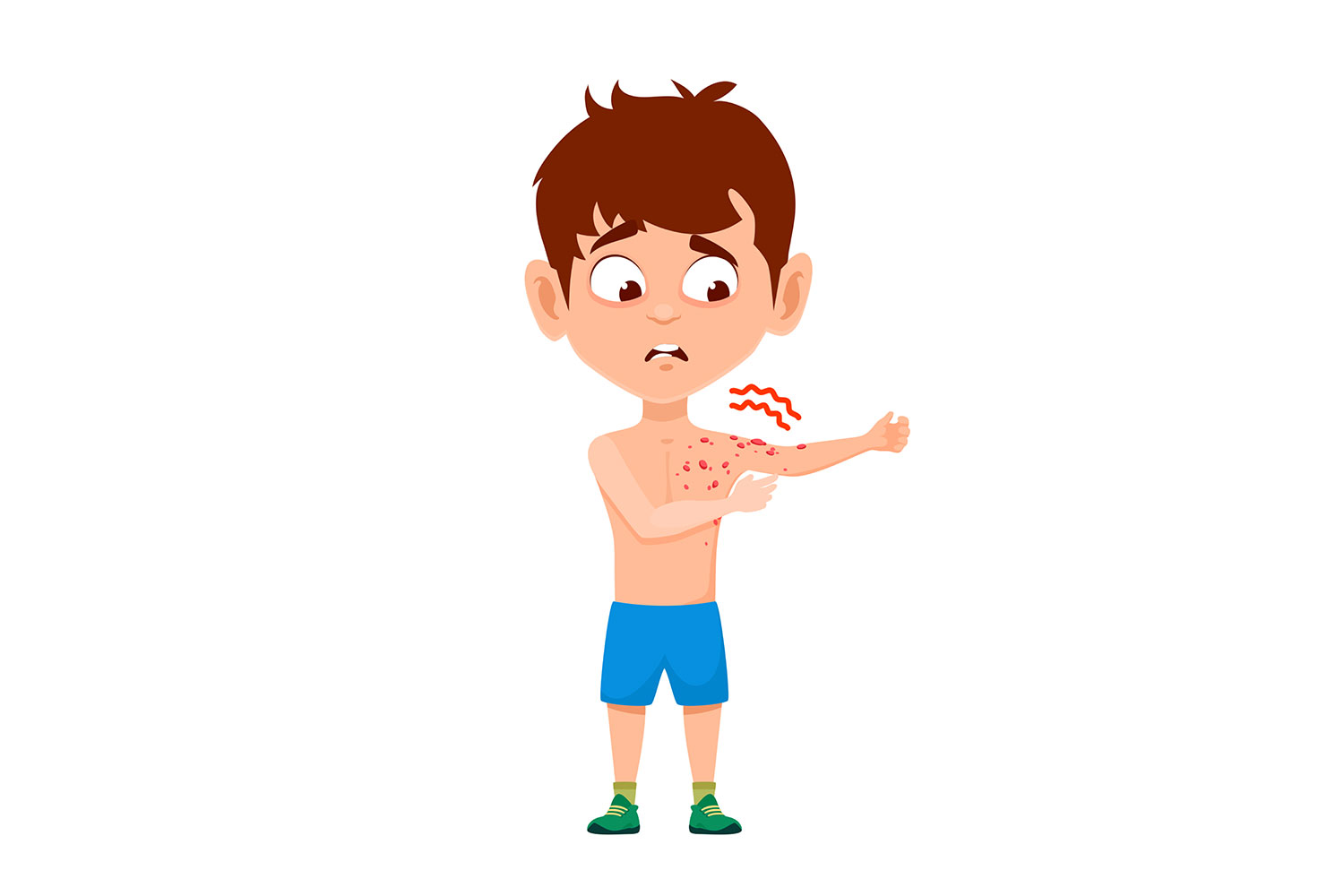Table of contents
Although benign and harmless, heat rashare nonetheless unsightly and itchy, to say the least. So how and why do they appear? What are the different ways of avoiding them and treating them when they do appear?
What is a heat spot, and how do you recognize it?
A skin eruption also known as a miliaria (which looks like a grain of millet), heat rashgenerally appear in the summer under the effect of heat when perspiration is high. Excessive sweating gets trapped under the epidermis, provoking a natural reaction in the skin that leads to the appearance of these small skin inflammations. It is therefore the obstruction of sweat ducts that leads to the formation of heat bumps.
This irritation, often confused with other dermatological problems, is characterized by redness, a tingling sensation and slight inflammation of the skin. These small pimples generally appear on exposed areas of the body: face, neck, arms, feet, torso… This skin irritation can also be found in the form of crystalline miliaria, which is characterized by the appearance of pimples resembling small transparent or white vesicles on the surface of the skin.

Don’t confuse Heat rash with other skin problems!
Be careful not to confuse these small heat rashwith other skin problems. While these small skin lesions are benign, we must be careful not to confuse them with other more or less serious and/or contagious pathologies, such as insect bites, chickenpox or scabies.
In fact, unless you’ve suffered a massive mosquito attack, an insect bite pimple is easy to recognize, as it’s usually isolated and the itching is relatively intense. Chickenpox, on the other hand, is a highly contagious infectious disease characterized by an eruption of blisters on the surface of the skin. It is during this first phase that it can be mistaken for heat rash. Diagnosis is very quick, however, as lesions appear rapidly all over the body, and are most often accompanied by fever.
Finally, caused by a parasite, scabies is a contagious skin disease transmitted by direct human contact. It causes skin lesions and severe itching.
How to prevent it?
As perspiration is the cause of the appearance of hot spots, it’s this perspiration that you need to avoid and regulate.
Choose the right materials
The first thing to do is to wear clothes that are adapted to the heat, because your skin must be able to breathe. Choose linen or cotton fabrics, and avoid garments made of synthetic materials that are too sticky, as they encourage perspiration.
Dress accordingly
Protect yourself from the sun by avoiding prolonged exposure during the hottest hours. Wear a hat or cap and apply a low-oily sunscreen to avoid clogging the skin’s pores.
Adapt your activities
Avoid overly intense physical activity. High temperatures already cause perspiration, so there’s no need to amplify the phenomenon by exercising outdoors in the middle of a heatwave (and not just to avoid heat rash!). Instead, exercise indoors in a relatively cool place, or walk in the shade early in the morning or in the evening when temperatures are lower.
Keep cool
If your indoor temperature is too hot, reduce it by a few degrees with a fan, an air conditioner or by dampening your curtains. Take regular cool showers and keep well hydrated.
Dry off properly
After a shower, a swim in the sea or a dip in a pool, remember to dry yourself off properly, especially in the folds of your body. Keeping moisture under your clothes will encourage the appearance of hot spots.
The right gestures to adopt
Itchy, itchy… The main drawback of heat rashis the itching they cause, so don’t touch them! As with other types of pimples, scratching will increase itching and can lead to infection.
Even if they’re relatively unsightly, don’t hide them – leave them out in the open to dry and disappear more quickly.
To reduce the urge to scratch, put a cool, damp cloth over them for a few minutes. You can also place a few ice cubes in a clean cloth and run it over the itchy spots. In either case, don’t forget to dry off thoroughly afterwards!
Aloe vera gel will probably be your best ally for soothing and moisturizing your skin. Apply it to the affected areas as soon as you get out of the shower. Peppermint hydrosol can help you cope with itching with its refreshing power. It will purify the epidermis and relieve the sensation of irritation. Finally, baking soda is an effective grandmother’s remedy. Applied directly to pimples or in bath water, it will help make them disappear and calm the urge to scratch.
